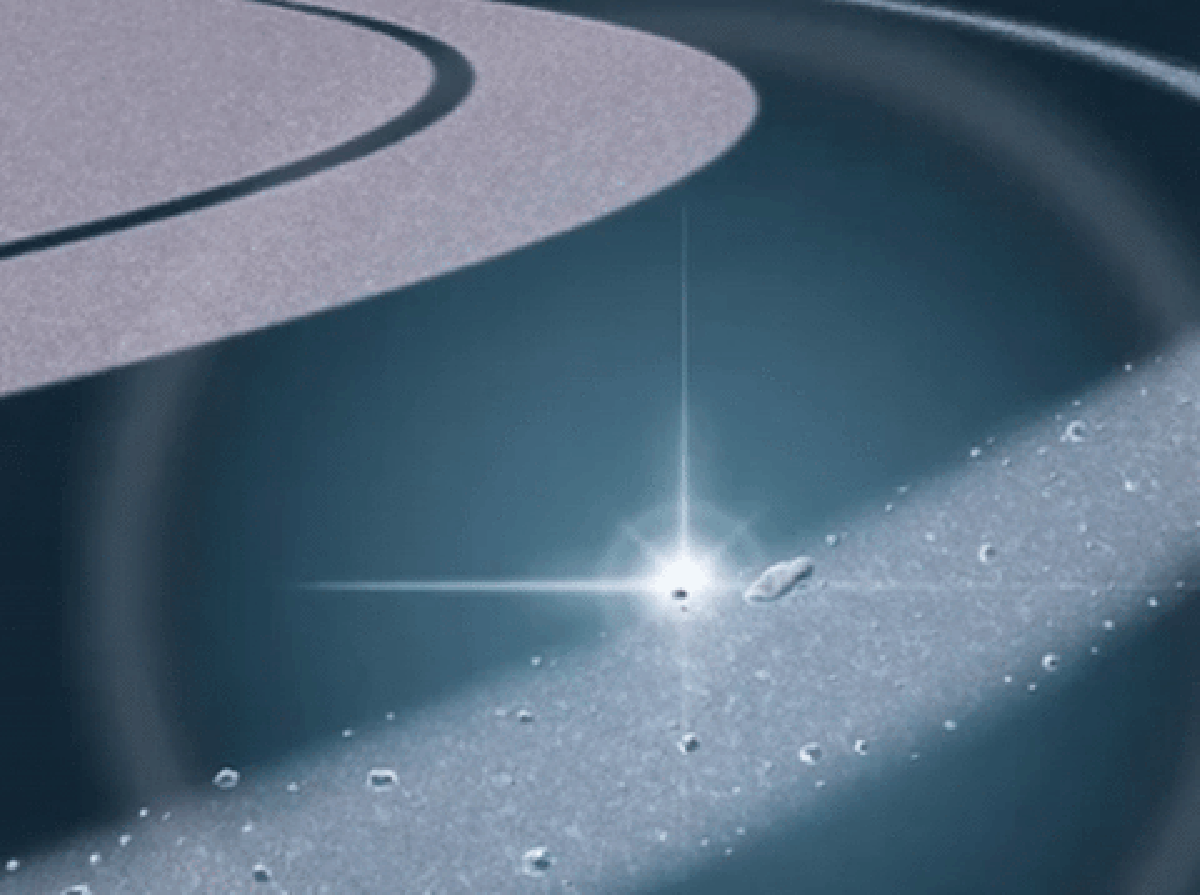Meet Mittens, a hunk of ice and rock about 2,000 feet wide orbiting Saturn in the planet's F ring—and the name of a deceased cat who belonged to planetary scientist Larry Esposito's daughter. Mittens has company: About 60 similar clumps scattered throughout the F ring. Not all of these features have nicknames, but those that do honor cats beloved by Saturn scientists—and more will likely be discovered in Cassini's last data.
The very fact that these features have nicknames means that they're scientifically interesting—their fluffy titles act as references so scientists can talk about individual lumps easily and without confusion. The naming scheme was the brainchild of Esposito, a professor at the University of Colorado, and his grad students. "I just gave them nicknames so I could keep them straight," he told Newsweek.
Esposito has spent 40 years studying Saturn's rings—in fact, he's the person who discovered the F ring in the first place. "The rings are beautiful, one of the most beautiful sights in the solar system," he says, but there's more meat here than that. "As scientists, we're interested in what they can tell us about the history of the planet and the history of planetary formation." But as he and his students were analyzing these clumps, first spotted in 2005, they needed a way to refer to them. Enter Mittens.
Since the clumps are transient, Esposito said, "I thought they had multiple lives," like cats and their notorious nine lives. He also wanted to avoid stepping on the toes of the International Astronomical Union, which is in charge of approving official names for features in space. "If we're going to have nicknames for this, I don't want to be too serious, I want to be playful," Esposito said.
Fluffy nickname aside, Mittens and its Saturnine feline friends could help scientists answer a few stumpers about our solar system. First, cataloging them will help scientists make their estimate of the total mass of Saturn's rings more accurate—and that has implications for their age; they can only be old if they're massive.
And Mittens may even hold the clues to the origins of our own planet. That's because before the planets of our solar system had formed, they were small clumps of rock strewn throughout a disk—not so different from kittens in Saturn's rings. That means understanding how kittens form and fall apart could tell us how Earth and our neighbors formed too, Esposito says.

His theory is that while Mittens won't be around forever, but there will always be a certain number of Mittens-like features. Esposito compares it to the way real cats like to hang out on the ruins of the Roman Forum. "The cats of course come and go, but there's always some cats in the Roman Forum, sitting on this ancient structure." The kittens are particularly dynamic near the two moons closest to the ring, Prometheus and Pandora, which to Esposito suggests that the phenomena are connected.
He says that models accounting for all of the physics at play are too large and complicated for computers to process, but that he's developed a simplified model inspired by the boom-and-bust cycles seen in population ecology and economics. "The moons stir up the rings, the rings respond by clumping up, the clumps stir up the rings, that erodes the clumps and they disperse, so it's all cyclic," Esposito says.
That's still a theory. "I definitely have an ax I'm grinding here, an idea I have in my head," he is quick to add. "Maybe most people wouldn't agree with that simple solution." But the only way to know for sure is to keep looking for kittens.
And how do you spot a kitten in outer space? The clumps are too small to show up in photographs. Watch a star pass behind the ring and look for dips in its brightness where the clump blocks its light. That's a process called a star occultation, which Esposito and his colleagues on Cassini's Ultraviolet Imaging Spectrograph instrument managed to do more than 150 times before the spacecraft's mission ended earlier this month. And Esposito says he expects the instrument likely spotted more kittens during its grand finale dance through the rings, although he doesn't have that data yet—so stay tuned for more of Mittens' kin.
Uncommon Knowledge
Newsweek is committed to challenging conventional wisdom and finding connections in the search for common ground.
Newsweek is committed to challenging conventional wisdom and finding connections in the search for common ground.
About the writer
Meghan Bartels is a science journalist based in New York City who covers the science happening on the surface of ... Read more
To read how Newsweek uses AI as a newsroom tool, Click here.








